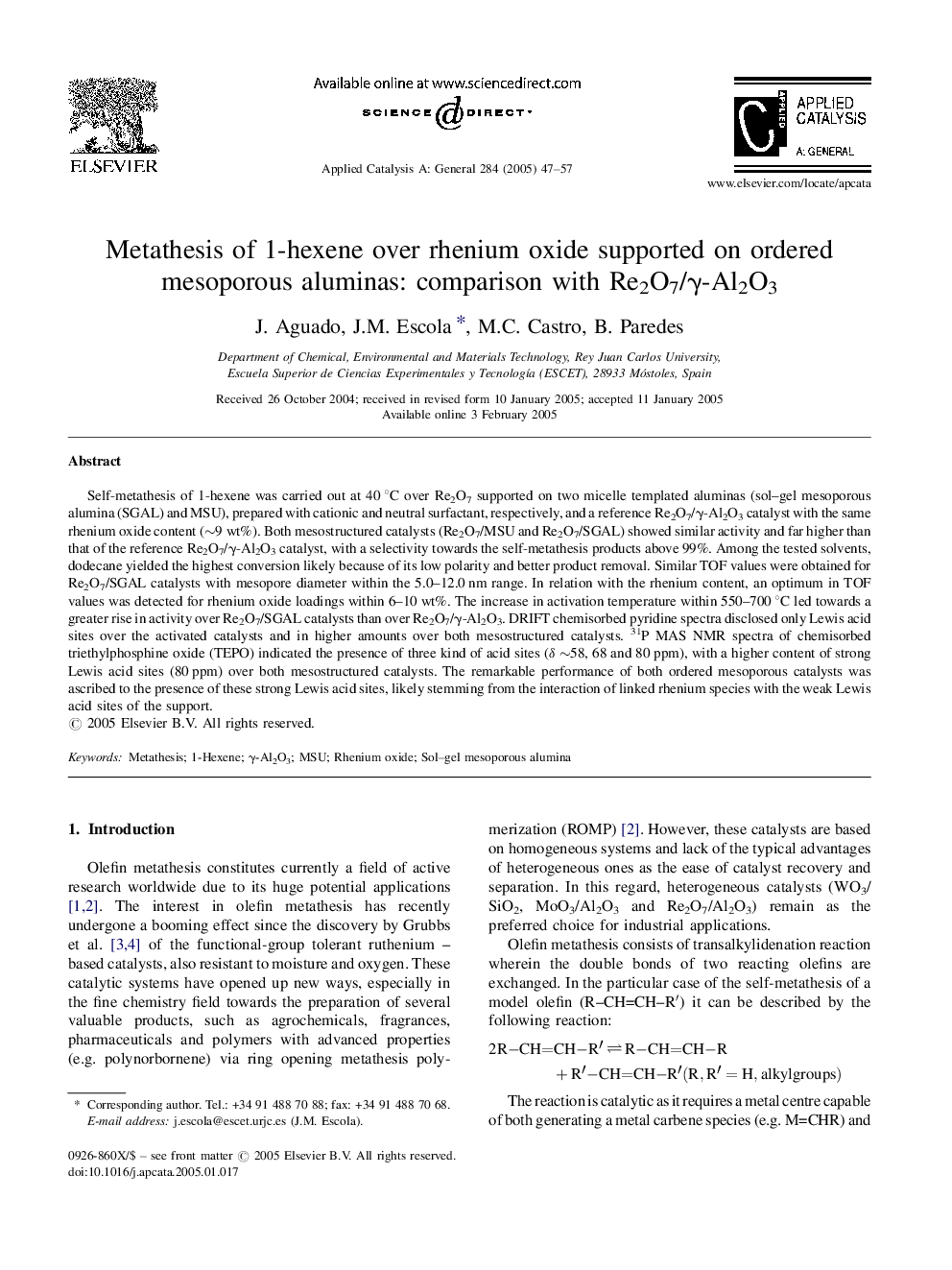| Article ID | Journal | Published Year | Pages | File Type |
|---|---|---|---|---|
| 9607971 | Applied Catalysis A: General | 2005 | 11 Pages |
Abstract
Self-metathesis of 1-hexene was carried out at 40 °C over Re2O7 supported on two micelle templated aluminas (sol-gel mesoporous alumina (SGAL) and MSU), prepared with cationic and neutral surfactant, respectively, and a reference Re2O7/γ-Al2O3 catalyst with the same rhenium oxide content (â¼9 wt%). Both mesostructured catalysts (Re2O7/MSU and Re2O7/SGAL) showed similar activity and far higher than that of the reference Re2O7/γ-Al2O3 catalyst, with a selectivity towards the self-metathesis products above 99%. Among the tested solvents, dodecane yielded the highest conversion likely because of its low polarity and better product removal. Similar TOF values were obtained for Re2O7/SGAL catalysts with mesopore diameter within the 5.0-12.0 nm range. In relation with the rhenium content, an optimum in TOF values was detected for rhenium oxide loadings within 6-10 wt%. The increase in activation temperature within 550-700 °C led towards a greater rise in activity over Re2O7/SGAL catalysts than over Re2O7/γ-Al2O3. DRIFT chemisorbed pyridine spectra disclosed only Lewis acid sites over the activated catalysts and in higher amounts over both mesostructured catalysts. 31P MAS NMR spectra of chemisorbed triethylphosphine oxide (TEPO) indicated the presence of three kind of acid sites (δ â¼58, 68 and 80 ppm), with a higher content of strong Lewis acid sites (80 ppm) over both mesostructured catalysts. The remarkable performance of both ordered mesoporous catalysts was ascribed to the presence of these strong Lewis acid sites, likely stemming from the interaction of linked rhenium species with the weak Lewis acid sites of the support.
Related Topics
Physical Sciences and Engineering
Chemical Engineering
Catalysis
Authors
J. Aguado, J.M. Escola, M.C. Castro, B. Paredes,
